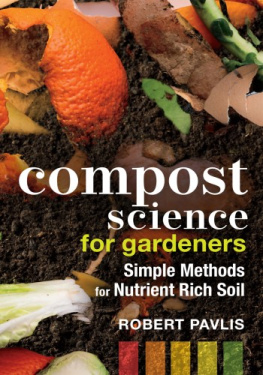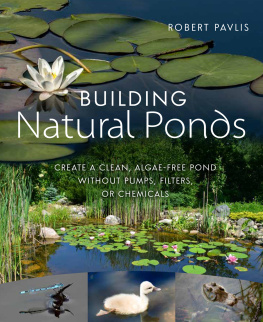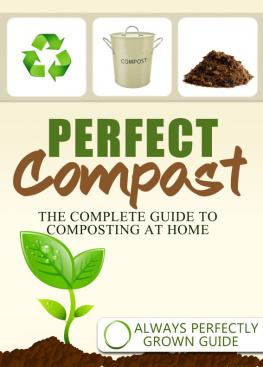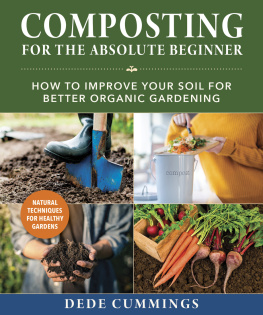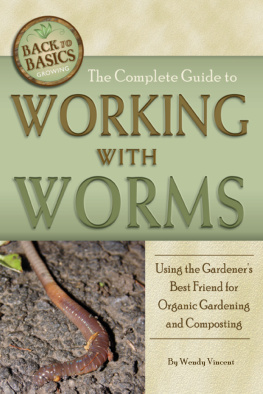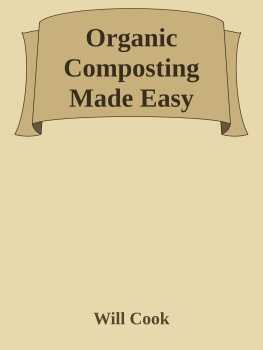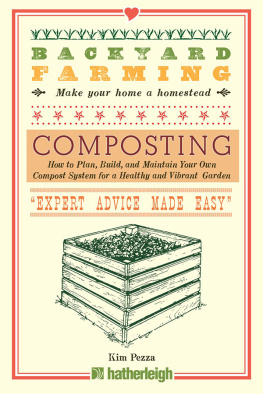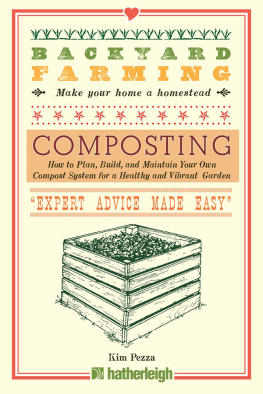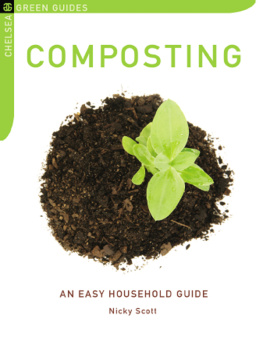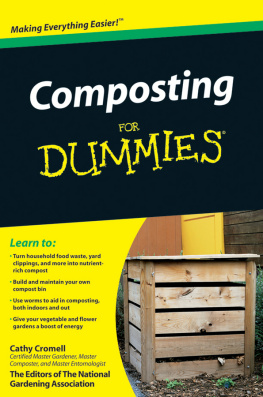Praise for Compost Science for Gardeners
Do you want to know anything about compost or composting? And I do mean anything ! Robert Pavliss book Compost Science for Gardeners covers it all, including of course, leading you through the nitty gritty, hands-on making of compost, various kinds of bins, and best uses of compost. Also, some specialized composts, such as bokashi and vermicompost, and more.
Lee Reich, PhD., author, Growing Figs in Cold Climates and The Ever Curious Gardener
Myth-buster Robert Pavlis has done it again, writing an essential resource on the science (and art) of composting. This will be a great addition to your gardening bookshelf.
Rebecca Martin, technical editor, Mother Earth News magazine
Robert Pavlis does what he does bestusing down to earth science to teach, this time to make great compost. This should be your go-to manual for great soil!
Jeff Lowenfels, author, DIY Autoflowering Cannabis , and the Teaming book series on organic growing
Robert Pavlis is always thorough, accurate and his work very readable. This volume on compost will sit on our shelf of most frequently visited books where we can refer to it often. Composting should not be complicated. Reading Compost Science for Gardeners takes the hocus pocus out of the process and helps gardeners make the most of their composting efforts. Thank you Robert! This book is long overdue.
Mark and Ben Cullen, Cullens Foods
Compost Science for Gardeners
compost science for gardeners Simple Methods for Nutrient Rich Soil
ROBERT PAVLIS
Copyright 2023 by Robert Pavlis. All rights reserved.
Cover design by Diane McIntosh.
Cover image iStock
Printed in Canada. First printing November 2022.
Inquiries regarding requests to reprint all or part of Compost Science for Gardeners should be addressed to New Society Publishers at the address below. To order directly from the publishers, please call 250-247-9737 or order online at www.newsociety.com .
Any other inquiries can be directed by mail to:
New Society Publishers
P.O. Box 189, Gabriola Island, BC V0R 1X0, Canada
(250) 247-9737
L IBRARY AND A RCHIVES C ANADA C ATALOGUING IN P UBLICATION
Title: Compost science for gardeners:
simple methods for nutrient rich soil / Robert Pavlis.
Names: Pavlis, Robert, author.
Description: Includes bibliographical references and index.
Identifiers: Canadiana (print) 20220421056 | Canadiana (ebook) 20220421196 |
ISBN 9780865719767 (softcover) | ISBN 9781550927702 ( PDF ) |
ISBN 9781771423663 ( EPUB )
Subjects: LCSH : Compost Handbooks, manuals, etc. |
LCSH : Garden soils. | LCSH : Gardening Handbooks, manuals, etc.
Classification: LCC S 661 .P38 2023 | DDC 631.8/75 dc23
New Society Publishers mission is to publish books that contribute in fundamental ways to building an ecologically sustainable and just society, and to do so with the least possible impact on the environment, in a manner that models this vision.

Contents

Introduction
What is the secret to great flowers and more vegetables?
You can buy great starter plants or high-quality seeds, plant them in the right amount of sun or shade, and water correctly, but all of that has a limited effect on plant growth. The secret to great plants is the soil. Get the soil right and you can grow anything that is hardy in your location.
The obvious next question is, how do you get great soil? The answer to that question is a bit more complicated, but a key ingredient is organic matter. Adding organic matter to soil increases microbial activity, releases plant nutrients, and improves soil structure.
That nice crumbly black gold that gardeners talk about is the result of higher levels of organic matter in the soil.
Nature adds organic matter to soil all the time. Fall leaves blanket the ground, and by the following summer they have been magically incorporated into soil. Animals run through the area adding some fresh manure, and many insects die due to short life spans, adding even more organic matter. The grasses in fields set down deep roots which are constantly dying off and regenerating, all the while adding organic matter.
We see all of these processes taking place, but few of us think about the way in which organic matter is cycled around. It starts as CO in the air, which is absorbed by plants and combined with sunlight to form sugars and other carbohydrates. These high carbon compounds form the basis of all organic matter.

The Energy Food Web moves carbon from the air into the soil.
When plant material falls to the ground, it becomes a carbon food source for microbes. They soon convert that plant into invisible organic matter, all the while moving it deeper into the soil.
If the plant is eaten by animals, insects, or worms, it is converted into fecal matter which is nothing more than partially digested organic matter. Some of the carbon in the food is digested and absorbed by the animal. All non-plant organisms, including microbes, animals, insects, birds, and even humans, are essentially digested organic matter that originated from plants. In the end, they are returned to the soil.
All of the processes that I have just described also happen in your garden, and you can improve on them or inhibit them. Its your choice.
Some gardeners get in the way of these natural processes. They keep their soil in pristine condition, not allowing any old vegetation from being incorporated into soil naturally. They spray for pests and reduce the number of insects that live and die in the garden. They grow vegetables, harvest the produce, and take all of the old plant material to the curb for disposal. Fall leaves are raked and given to the city.
This makes for a very neat garden, but over time the soil has less and less organic matter, making it unhealthy.
It does not have to be that way, and many gardeners take a different approach. They do the opposite. Plant matter is left where it falls. Most insects are treasured and encouraged to use the property. Some gardeners even go so far as to collect bags of leaves from neighbors and bring them back to their garden. A big part of their gardening focus is to add more organic matter than they had when they started.
There is also a third group, the impatient gardeners. They dont want to wait for nature to incorporate yard waste and kitchen scraps into soil. They want to speed up this process. Composting is the way to do that.
Composting is nothing more than helping nature speed up the decomposition process. It takes fallen leaves, dead insects, kitchen scraps, and manure and accelerates the process of turning that material into nutrients for microbes and plants.
All of the composting methods described in this book make use of natural processes, but gardeners manipulate them so they are more efficient. The end product is essentially the same as the organic matter produced by nature.
What Is Compost?
Merriam-Webster defines compost as a mixture that consists largely of decayed organic matter and is used for fertilizing and conditioning land. This definition is not correct since the organic matter is not fully decayed.
Wikipedia defines compost as a mixture of ingredients used to fertilize and improve soil. Compost is used to fertilize, and it does improve soil, but so do other things, like manure and wood chips, but neither of these are compost.
Next page
